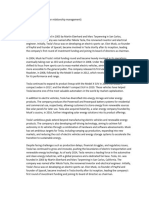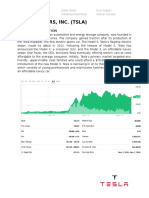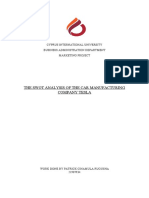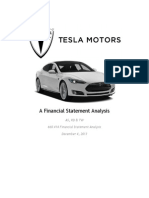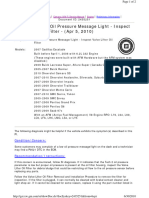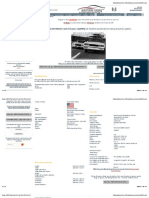INTRODUCTION:
Attention/Hook: On April 1st, 2018, Elon Musk tweeted jokingly about
Tesla becoming bankrupt, but he was hinting at Tesla’s Financial struggle.
Credibility: My name is Erick Siguenza, and through my reading of the case
study “Another Liquidity Crunch at Tesla?” by Christopher Noe. I have
understood the other side of Tesla.
Background: This article discusses Tesla’s financial struggle and its
outbreak into the EV market. (Optional if not included in the topics in the
body)
Purpose: The goal is to examine Tesla’s financial challenges and its impact
on the EV market.
Preview: First I'll discuss Tesla’s financial history and struggle.
Second I will discuss how Tesla used strategies and their
outcomes.
(Transition) - To begin with Tesla and its financial struggle.
Body 1:
Key point - Tesla’s financial struggle
1. Throughout 2017 and 2018, Tesla faced severe cash burn issues while trying to
ramp up Model 3 production. Despite a positive market, cash flow remained a
major concern.
Subpoints:
a. When making the Model 3, Tesla had a massive cash flow problem. To
keep up with demand, Tesla had to scale its production and delivery
infrastructure rapidly, which increased costs. For example, in 2018 alone,
� the company’s quarterly cash burn reached levels that made investors
nervous.
b. Over the years Tesla has accumulated billions of debt by 2017 they had a
debt of 10 billion dollars. Most of the debt was from the Gigafactories and
the SolarCity debt.
c. Since acquiring SolarCity and the Gigafactories, the massive debt created
has been like a double-edged sword. It has helped to grow the company, but
it still caused intense pressure on the company to generate higher sales
volume to cover interest payments and avoid potential financial defaults.
(Transition) -
Body 2.
Key point - Tesla’s strategies and EV Impact
1. Tesla’s going from a niche EV manufacturer to a mass-market producer with the
Model 3 was a pivotal but risky move. Delays in production goals threatened
investor confidence, with critical targets like 5,000 cars per week.
Subpoints:
a. Targeting the Luxury EV Market First- Tesla’s initial strategy focused
on the high-end luxury market, launching the Roadster in 2008. This
allowed Tesla to establish a reputation for quality and innovation in electric
vehicles (EVs) before expanding to the mass market.
b. Tesla required significant investment, like the $5 billion Gigafactory built
in Nevada with Panasonic. This strategy allowed Tesla to control quality,
streamline production, and adapt quickly to changes. It set a new industry
standard, prompting other automakers to explore in-house production.
Tesla’s approach also advanced its battery technology development,
solidifying its lead in EV range and performance.
c. Tesla’s move from high-end EVs to the mass market with the Model 3 was
a big change. At $35,000, the Model 3 was more affordable and reached
more people. Even though there were production delays and some quality
problems, Tesla managed to meet demand and support its mission for clean
� energy. The success of the Model 3 got more people interested in EVs and
pushed companies like Ford and GM to make their own cheaper models.
This step by Tesla increased competition and helped move the whole EV
market forward.
(Transition) - To summarize
Conclusion
Summary: We covered Tesla’s major financial challenges, including cash flow issues
and $10 billion in debt from investments in Gigafactories and SolarCity. Despite these
struggles, Tesla’s strategies, such as entering the luxury market and launching the
affordable Model 3, boosted its growth and pushed the EV industry forward.
Closing statement: Tesla’s journey shows that big risks can lead to
industry-changing results. Thank you for listening, and I hope this sheds light on Tesla’s
impact on the EV market.




